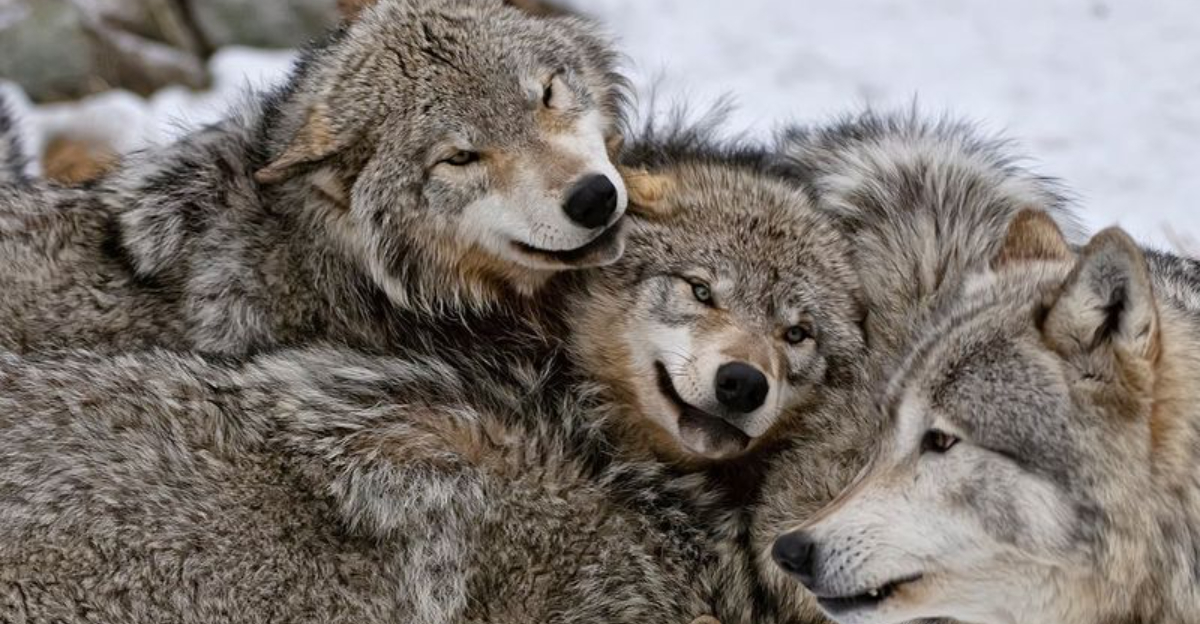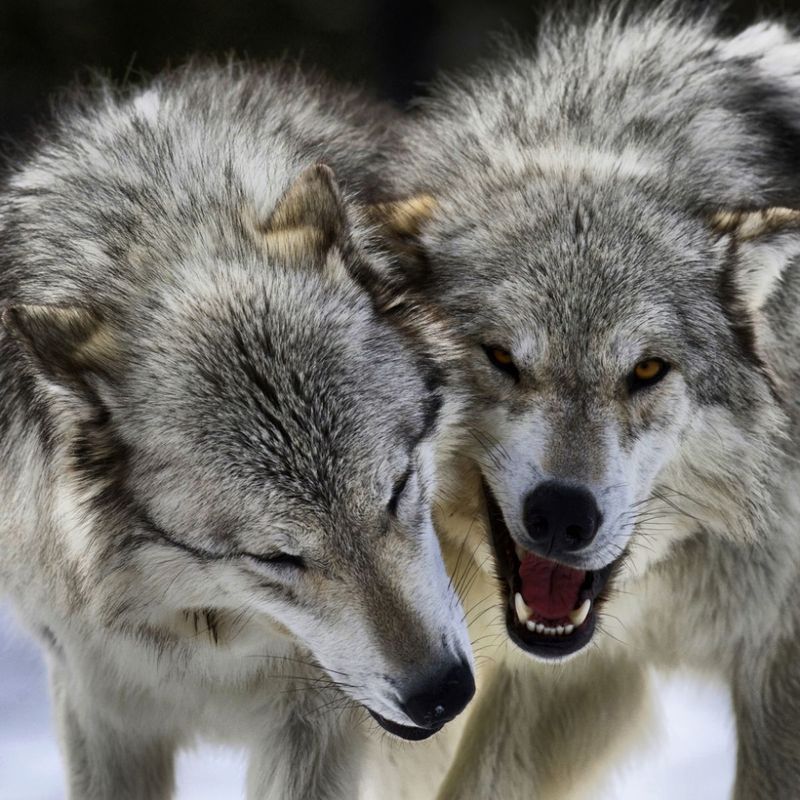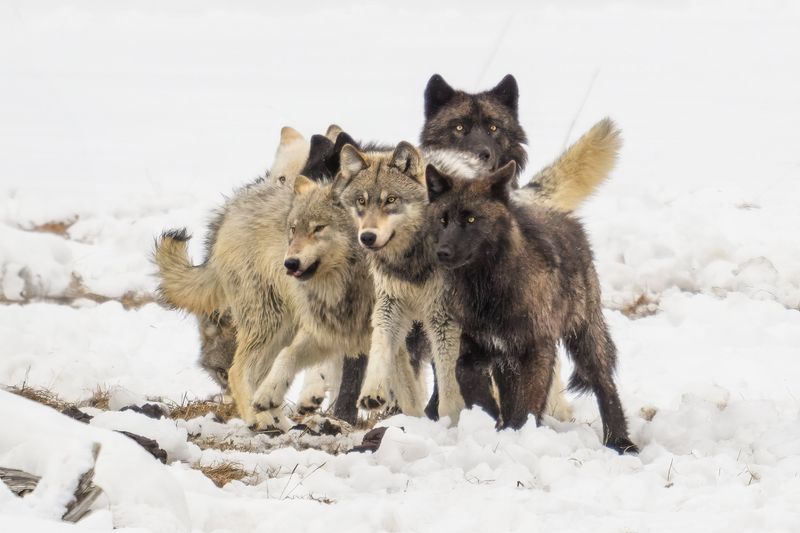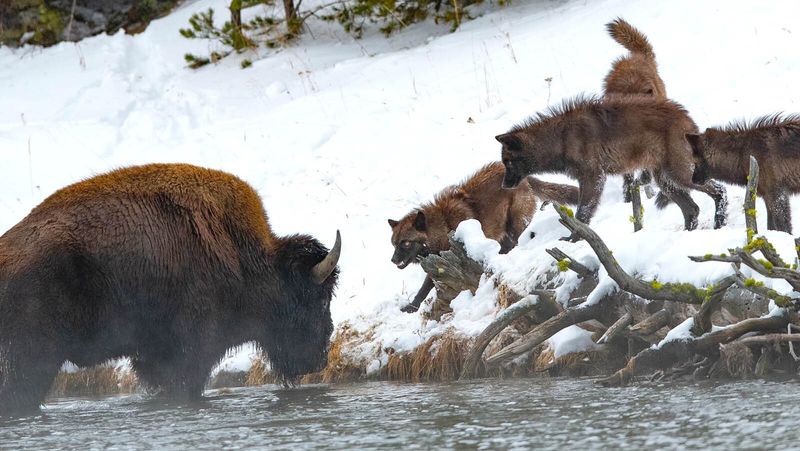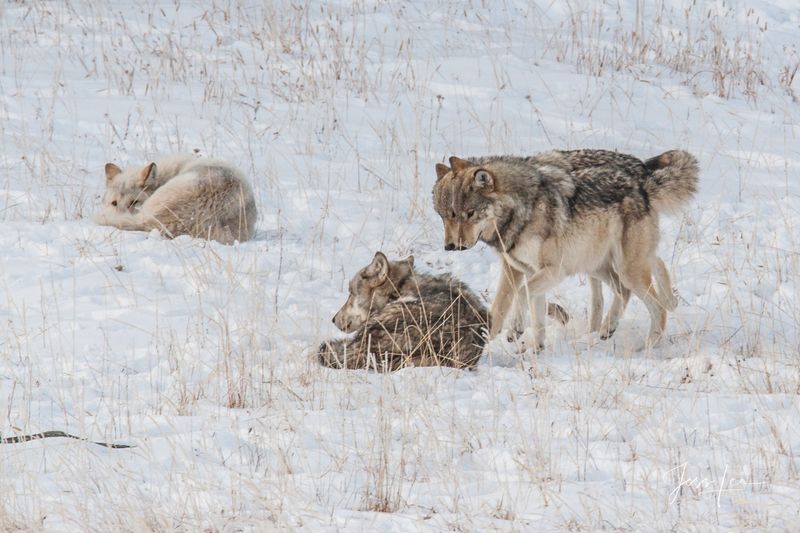Deep within Yellowstone National Park, gray wolves roam in family groups that have fascinated scientists for decades. Since their reintroduction in 1995, these magnificent predators have revealed surprising truths about how they organize their social lives. Far from the popular image of aggressive ‘alpha’ wolves battling for dominance, real wolf packs operate with family bonds at their core.
Family Bonds, Not Forced Dominance
Forget everything you thought you knew about ‘alpha wolves.’ Modern research has thoroughly debunked this outdated concept. Yellowstone wolf packs are actually extended families, typically consisting of a breeding pair (the parents) and their offspring from different years.
The so-called ‘alpha pair’ are simply mom and dad—biological parents who naturally guide the family without resorting to aggressive dominance displays. Their leadership comes from their experience and parental roles, not from defeating challengers in power struggles.
Young wolves usually remain with their birth pack for 1-3 years before potentially leaving to find mates and start their own families. This natural family structure explains why wolves show such remarkable cooperation when hunting, defending territory, and caring for pups.
Breeding Pair Leadership
The breeding pair—a mature male and female—form the cornerstone of wolf pack society in Yellowstone. Unlike the myth of the aggressive alpha forcing submission, these parents earn respect through experience and their crucial role in reproduction.
Remarkably, these breeding wolves make most key decisions for the group. They determine when and where the pack hunts, choose den sites, and lead defense of their territory against neighboring packs. Their wisdom proves especially valuable during harsh winters when finding food becomes challenging.
Scientists studying Yellowstone wolves have observed that packs with experienced breeding pairs typically maintain more stable territories and have higher pup survival rates. This practical knowledge, not physical dominance, makes them natural leaders of their family groups.
The Wisdom of Wolf Elders
Gray-muzzled wolves carry something invaluable: experience. Older wolves in Yellowstone packs serve as living libraries of crucial survival knowledge. They remember where to find prey during different seasons, recognize dangerous rival packs, and know the safest routes through their territory.
Research shows packs with elder wolves win more territorial disputes than those without these experienced members. One remarkable study documented how a 9-year-old female—ancient by wolf standards—led her pack to victory against a larger rival group through superior tactical positioning.
These elder wolves also play crucial roles teaching younger pack members essential skills. They demonstrate hunting techniques, how to care for pups, and even appropriate play behaviors. Their presence creates a multi-generational knowledge transfer system that strengthens the entire family unit.
Cooperative Hunting Strategies
Yellowstone wolves have perfected teamwork when hunting large prey like elk or bison. Rather than following a rigid dominance-based system, they use fluid roles that showcase each member’s strengths. Young, swift wolves may chase and harass prey while stronger adults position themselves for the final takedown.
Pack members communicate through an intricate language of ear positions, tail movements, and vocalizations during hunts. Scientists have recorded different howling patterns that appear to coordinate complex hunting maneuvers across distances.
After a successful hunt, the breeding pair typically eats first—not because they aggressively claim this right, but because other pack members naturally defer to them. This respectful food-sharing reinforces family bonds rather than establishing dominance. Even the youngest members eventually receive their share.
Raising the Next Generation
Pup-raising in Yellowstone wolf packs showcases their most heartwarming cooperative behaviors. Unlike the outdated view of only dominant wolves breeding, research shows that multiple females sometimes have pups within the same pack, especially in larger groups.
The entire pack participates in childcare duties. Non-breeding adults regurgitate food for hungry pups and take turns “babysitting” while others hunt. Young adult wolves often become enthusiastic “wolf nannies,” playing with and protecting their younger siblings while developing their own future parenting skills.
This collaborative pup-raising strategy dramatically increases survival rates. Yellowstone researchers found pups in larger packs with multiple caregivers have nearly twice the survival rate of those in smaller family units. This natural selection for cooperation, not domination, has shaped wolf social evolution for thousands of years.
